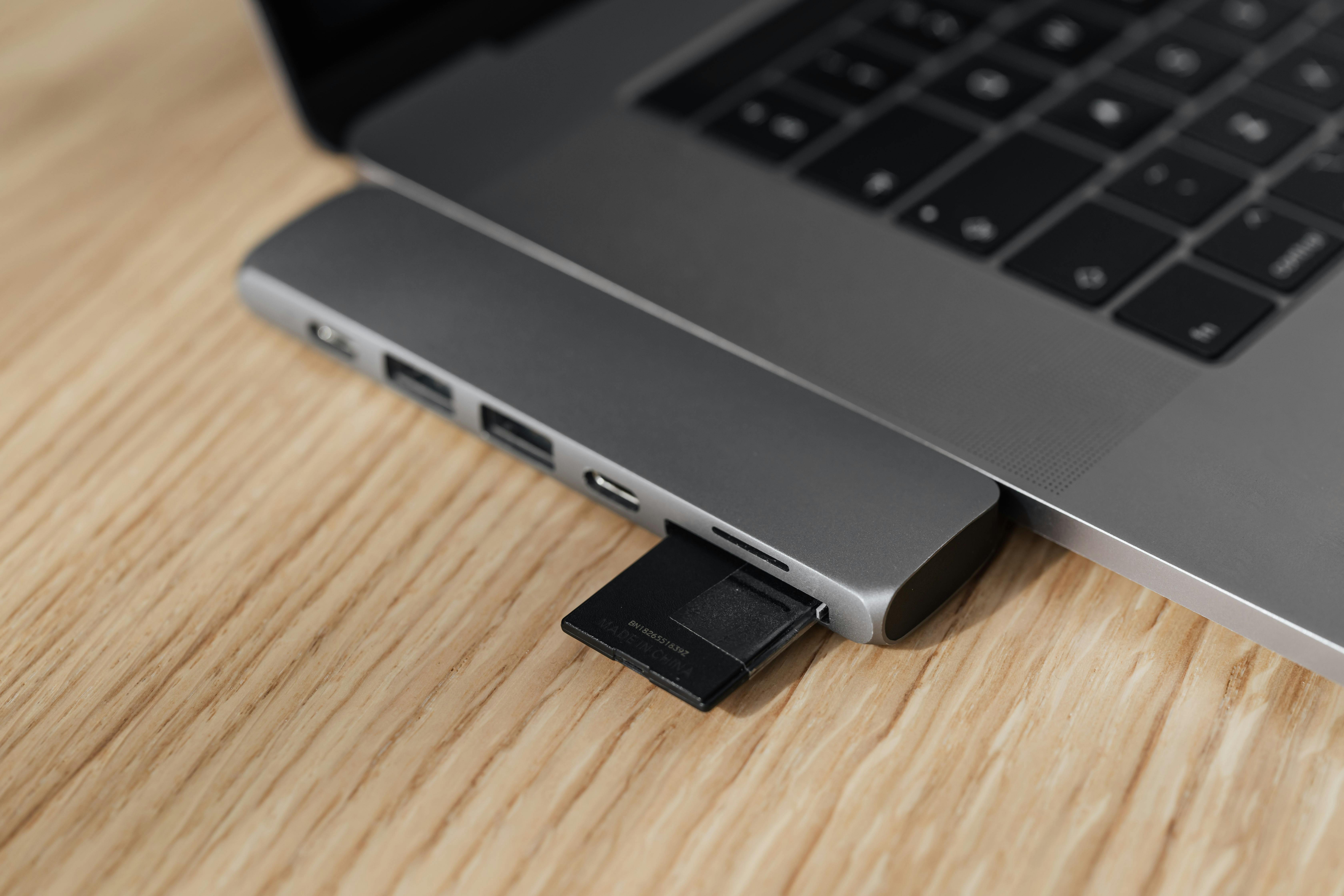
Cables and memory cards are a key part of everyday technology, whether for charging devices, transferring data, or storing photos and videos. With so many different types available, it can be useful to understand the basics. This guide explains the most common types of cables and memory cards in simple terms.
Types of Cables
USB Cables USB (Universal Serial Bus) cables are among the most widely used for connecting and charging devices. There are several types:
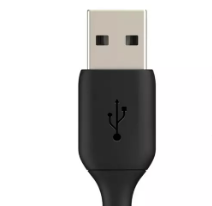 USB-A: The classic rectangular connector found on computers and older chargers.
USB-A: The classic rectangular connector found on computers and older chargers.
 USB-B: A square-shaped connector used with larger devices, like printers.
USB-B: A square-shaped connector used with larger devices, like printers. USB-C: The newest type of USB, used for faster data transfer and charging. It is reversible (plugs in either way up) and is now standard on many newer smartphones, laptops, and tablets.
USB-C: The newest type of USB, used for faster data transfer and charging. It is reversible (plugs in either way up) and is now standard on many newer smartphones, laptops, and tablets. Micro USB: A smaller, older connector, mostly used with older Android phones and smaller gadgets, though it’s now being replaced by USB-C.
Micro USB: A smaller, older connector, mostly used with older Android phones and smaller gadgets, though it’s now being replaced by USB-C.
 USB 3.0: A faster version of the standard USB-A, usually with a blue insert. It allows quicker data transfers compared to older USB versions.
USB 3.0: A faster version of the standard USB-A, usually with a blue insert. It allows quicker data transfers compared to older USB versions.
HDMI Cables HDMI (High-Definition Multimedia Interface) cables are used to transfer both video and audio. You’ll commonly use them to connect a TV to a device like a games console, computer, or DVD player.
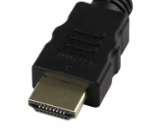 Standard HDMI: This is the most common type, used for connecting TVs and other large screens.
Standard HDMI: This is the most common type, used for connecting TVs and other large screens.
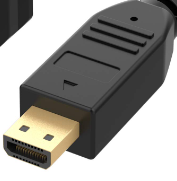 Mini and Micro HDMI: Smaller versions for use with more compact devices, such as cameras or tablets.
Mini and Micro HDMI: Smaller versions for use with more compact devices, such as cameras or tablets.
Ethernet Cables Ethernet cables are used for wired internet connections, offering a more stable and faster connection than Wi-Fi.
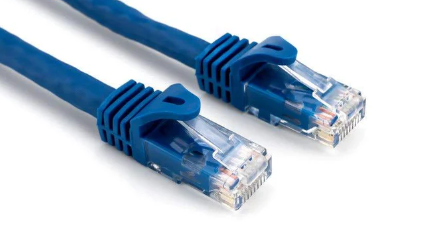 Cat5 and Cat5e: Basic Ethernet cables, suitable for standard home internet, supporting speeds up to 1Gbps.
Cat5 and Cat5e: Basic Ethernet cables, suitable for standard home internet, supporting speeds up to 1Gbps.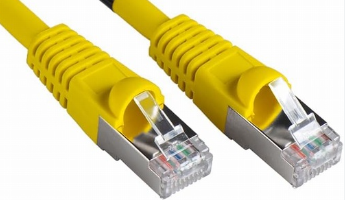 Cat6 and Cat6a: Faster, more advanced cables, ideal for faster internet speeds, especially in offices or homes with a lot of connected devices.
Cat6 and Cat6a: Faster, more advanced cables, ideal for faster internet speeds, especially in offices or homes with a lot of connected devices.
 Thunderbolt Cables: Thunderbolt cables are high-speed data and video transfer cables, used mostly with Apple devices but also supported by some Windows computers. The latest version, Thunderbolt 4, provides incredibly fast data transfer and the ability to connect several devices in a chain.
Thunderbolt Cables: Thunderbolt cables are high-speed data and video transfer cables, used mostly with Apple devices but also supported by some Windows computers. The latest version, Thunderbolt 4, provides incredibly fast data transfer and the ability to connect several devices in a chain.
View the full range here
Types of Memory Cards
SD Cards (Secure Digital) SD cards are small, portable storage devices used in cameras, camcorders, and some laptops. They come in different capacities:
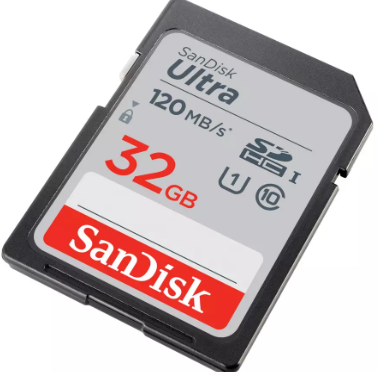 SDHC (High Capacity): Stores between 4GB and 32GB of data, suitable for standard use in cameras and many other devices.
SDHC (High Capacity): Stores between 4GB and 32GB of data, suitable for standard use in cameras and many other devices.
 SDXC (Extended Capacity): Can hold more than 32GB of data, up to 2TB. These are ideal for storing large files, such as 4K videos or lots of high-resolution photos.
SDXC (Extended Capacity): Can hold more than 32GB of data, up to 2TB. These are ideal for storing large files, such as 4K videos or lots of high-resolution photos.
 MicroSD Cards: MicroSD cards are smaller versions of SD cards, mostly used in smartphones, tablets, and action cameras. They are available in the same capacity types as SD cards (SDHC and SDXC), making them ideal for devices with limited space
MicroSD Cards: MicroSD cards are smaller versions of SD cards, mostly used in smartphones, tablets, and action cameras. They are available in the same capacity types as SD cards (SDHC and SDXC), making them ideal for devices with limited space
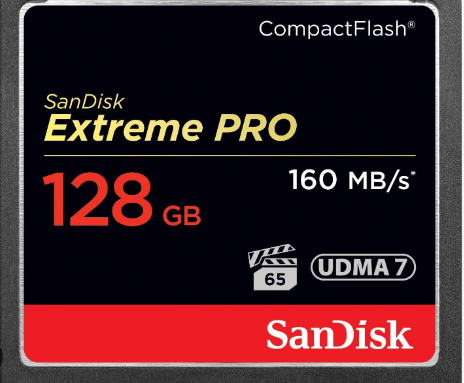 CF Cards (CompactFlash): CF cards are larger than SD cards and are used by professional photographers due to their durability and high performance. While not as common today, they’re still valued in professional-grade cameras.
CF Cards (CompactFlash): CF cards are larger than SD cards and are used by professional photographers due to their durability and high performance. While not as common today, they’re still valued in professional-grade cameras.
 CFast and XQD Cards: CFast and XQD cards are used in high-end photography and video equipment. These newer cards offer much faster speeds, making them perfect for tasks like recording 4K video or shooting bursts of high-quality photos.
CFast and XQD Cards: CFast and XQD cards are used in high-end photography and video equipment. These newer cards offer much faster speeds, making them perfect for tasks like recording 4K video or shooting bursts of high-quality photos.
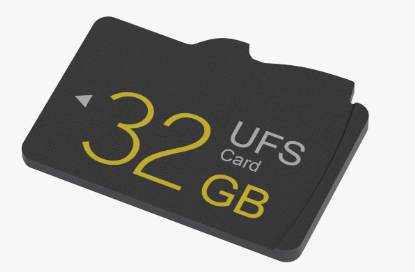 UFS Cards (Universal Flash Storage): UFS cards are the latest type of memory card, offering faster data transfer than traditional SD cards. Although not widely adopted yet, they are likely to become more common in the future as devices evolve.
UFS Cards (Universal Flash Storage): UFS cards are the latest type of memory card, offering faster data transfer than traditional SD cards. Although not widely adopted yet, they are likely to become more common in the future as devices evolve.
View the full range here
Conclusion
Choosing the right cable or memory card depends on what you need it for, whether it’s connecting your TV, charging your phone, or storing your holiday photos. We hope this post has helped in giving you a basic understanding of the different types and capabilities, that this will help you make the best choice for your devices.